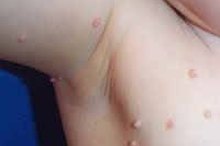Salicylic Acid for Scar Removal
The severity of a scar often depends on how deep the initial wound penetrates. A scar is made from skin cells and connective tissues called fibroblast cells which use gristle like fibers to hold the wound together, notes American Osteopathic College of Dermatology 1. Although a scar site will never completely return to normal, as hair follicles and sweat glands will note return, there are treatments like salicylic acid which can help repair some of the superficial scarring 234.
Salicylic Acid
Salicylic acid is a peeling agent that causes shedding of the epidermal layers of the skin, notes Drugs.com 234. It is a beta-hydroxy-acid, derived from plant hormones and is recognized as safe by the U.S. Food and Drug Administration. You can use salicylic acid in a variety of forms and strengths in topical cosmetics and medicines for skin conditions like scarring, acne, warts and dandruff 234.
Effects
How to Get Rid of Stitch Scars on the Face
Learn More
Topical salicylic acid will help reduce the appearance of your scars by exfoliating your skin and removing any dead skin cells from the outer epidermal layers, according to website Kavi Skin 234. The removal of these skin cells will reduce the superficial appearance of the scars on the surface while also encouraging collagen production in the dermal layers to produce new, less-blemished skin.
Guidance
It is important to follow the information guidelines on the salicylic acid product you buy 234. The exact dosage will vary depending on the severity of the scarring and the form of salicylic acid you are using 234. Use it on alternate days are the beginning of the treatment so that your skin does not become overly dry. Medline Plus notes that it may take several weeks for the full benefits to be shown 4.
Severe Scars
How to Get Rid of Folliculitis Scars
Learn More
Salicylic acid may only be suitable for treatment of small blemish scars like those caused by acne lesions 234. For more severe scarring clinical treatments may be your best option. Acne.org notes that for indented scars like ice pick, rolling or boxcar scars, collagen fillers, lasers and dermabrasion techniques may be suitable. For raised fleshy growth scars, called hypertrophics or keloids, cortisone injections, steroids and surgery might be your only choice, notes American Osteopathic College 1.
Considerations
MayoClinic.com warns that if salicylic acid comes into contact with the eyes, nose or mouth, you should rinse the area under water for 15 minutes 234. Salicylic acid should not be applied to areas where the skin irritated or broken in any way 234. Although milder salicylic products are available over-the-counter without prescription, consult with your doctor to decide the best strength and type of salicylic acid product for you 234.
Related Articles
References
- American Osteopathic College of Dermatology
- Drugs.com: Salicylic Acid Topical
- Kavi Skin: Salicylic Acid
- Medline Plus: Salicylic Acid
- Acne.org: Acne Scar Treatment
- MayoClinic.com: Salicylic Acid, Proper Use
- Arif T. "Salicylic acid as a peeling agent: a comprehensive review." Clinical Cosmetic and Investigational Dermatology. 2015 Aug; 8:455-61.
- Arif T. "Salicylic Acid as a Peeling Agent: A Comprehensive Review." Clinical Cosmetic and Investigational Dermatology. 2015 Aug 26;8:455-61.
- Castillo DE, Keri JE. "Chemical Peels in the Treatment of Acne: Patient Selection and Perspectives." Clinical Cosmetic and Investigational Dermatology. 2018; 11: 365–372.
- Zaenglein AL, Pathy AL, Schlosser BJ, et al. "Guidelines of Care for the Management of Acne Vulgaris."Journal of the American Academy of Dermatology. 2016 May;74(5):945-73.
Writer Bio
Stuart Biggs began writing in 2010 and specializes in health, beauty and lifestyle articles for various websites. Biggs graduated from Bournemouth University in 2003 with a Bachelor of Arts (Hons) in scriptwriting for film and TV.









